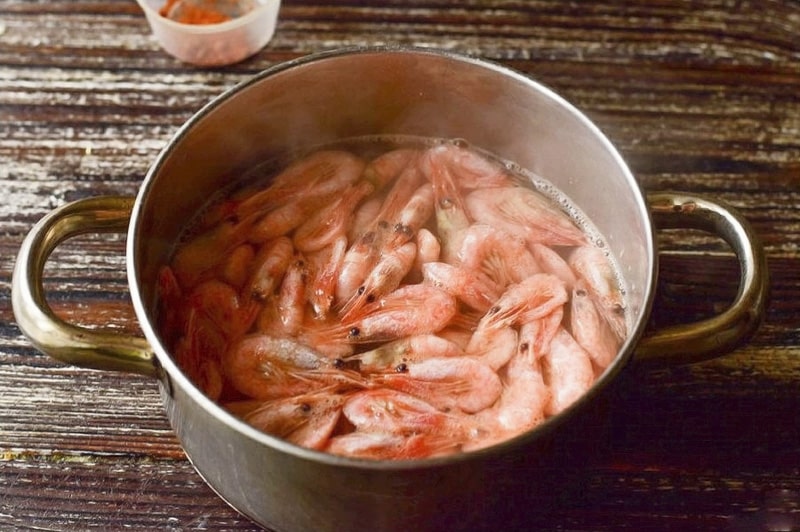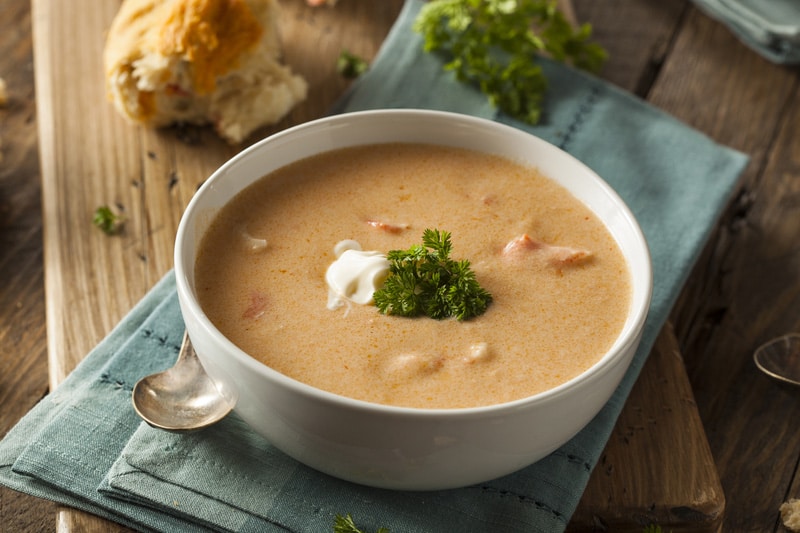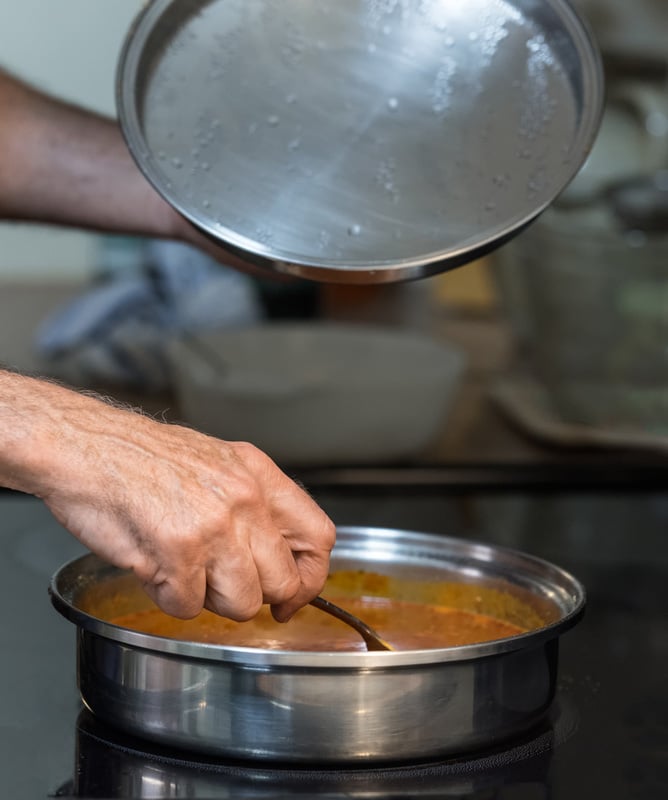
If you’re a seafood fan, you probably regularly make shrimp or crayfish. What do you do with the water you used to boil them in? Please don’t throw it away! It forms the base for delicious stock.
If you don’t need the liquid immediately or don’t have time to make stock now, it can be strained and stored in the refrigerator for a few days or frozen for several months. Keep reading because we’re going to share some ideas for that yummy seafood stock plus tell you how to make it.
What to Do With Leftover Shrimp Boil Water?
Answer: Make a Shrimp Stock!
Shrimp stock is your ticket to several delectable seafood dishes and is the perfect way of using up that shrimp boiling water as well as the shells. Don’t worry too much about the quantities as this method will work for however much water and shells you have.
If you don’t want to make the stock immediately, simply freeze the water and shells (separately) until you are ready to use them.
How to make shrimp stock
- Use your biggest wok. Put a tablespoon of cooking oil such as sunflower oil into the wok and heat it over a high flame.
- Put in the shrimp shells and mix them around. Stir fry them for a couple of minutes then add a cupful of the shrimp boil water. Bring it to a boil, pressing down on the shells to extract the flavor.
- Reduce the water to about a half then add another cupful. Keep doing this until you have reduced the water to a few cupfuls and you have a strongly scented broth.
- Add a pinch or two of salt. Turn the heat down and leave it to simmer for about five minutes more.
- Now strain the stock through a strainer. Discard the shells or use them on your compost heap. Your stock is now ready to use.
Here are 5 ideas but if you have any more, we’d love you to share them with us.
- Stock Cube
Turn your stock into “stock ice cubes”. Reduce the shrimp stock as much as possible through boiling over high heat with the lid off. Once it reaches a concentrated form, pour it into ice cube trays. Allow it to cool then freeze them.
These stock cubes can be used to add flavor to chowder or any fish dishes. Remember, it is important to reduce the stock as much as possible to ensure the cube has a concentrated flavor.
If you want to make it more flavorful, fry an onion, a little garlic, and some parsley stalks in the oil before adding the shrimp shells.
- Fish Cakes
This is another method of using leftover shrimp boil water. Make your fishcakes in the usual way with chopped fish, mashed potato, egg, herbs, and breadcrumbs.
However, instead of mashing the potatoes with milk, use some of your shrimp stock. This will intensify the fish flavor of the cakes and leave everyone wondering what your secret ingredient is!
- Risotto
Risotto is an Italian dish that’s made with rice cooked in stock. The rice is cooked by slowly adding broth or stock. Use the shrimp boil water that you’ve turned into stock to make a delicious seafood risotto.
It should be heated up then added a little at a time to the risotto rice. We suggest that you add chopped seafood at the end of the cooking time for an extra special touch.
- Paella
When cooking your rice for paella, use the shrimp stock to boil it. This will complement the seafood in the paella beautifully.
- Bisque
Bisque is a well-known seafood soup that has a rich, creamy flavor and texture. It is usually made with lobster but do go ahead and make it with shrimp or any other fish you like, using your shrimp stock as a base.
Various recipes demand intensely flavored sauces, and this leftover shrimp boil water stock makes a perfect addition to sauces that are going to be used for fish.
For cooking a pan sauce, add this stock to the sauce liquid, add appropriate seasonings, herbs, and spices, and reduce it. Then, add some butter and flour roux for thickening it up plus a little cream.
Lastly, add a bit of white wine to make it sing and cut the richness. You will end up with a sauce with a tremendous depth of flavor.
To Conclude
As you can see, there are many ways to use leftover shrimp boil water. Remember this article next time you are tempted to throw it down the drain!



